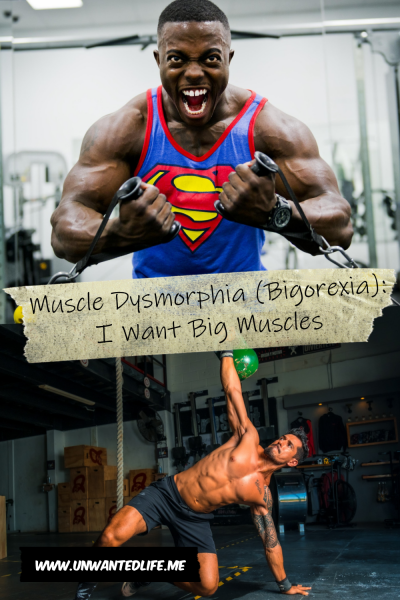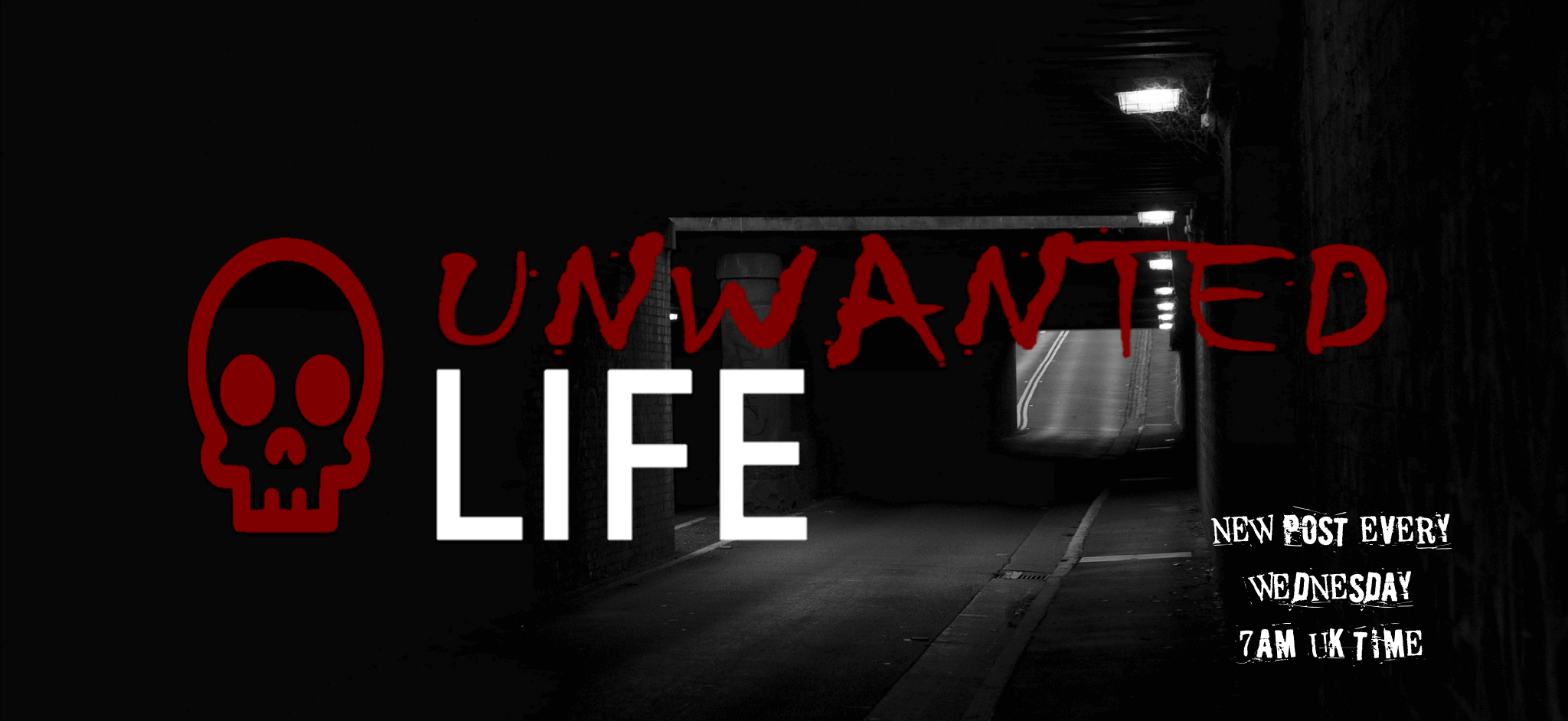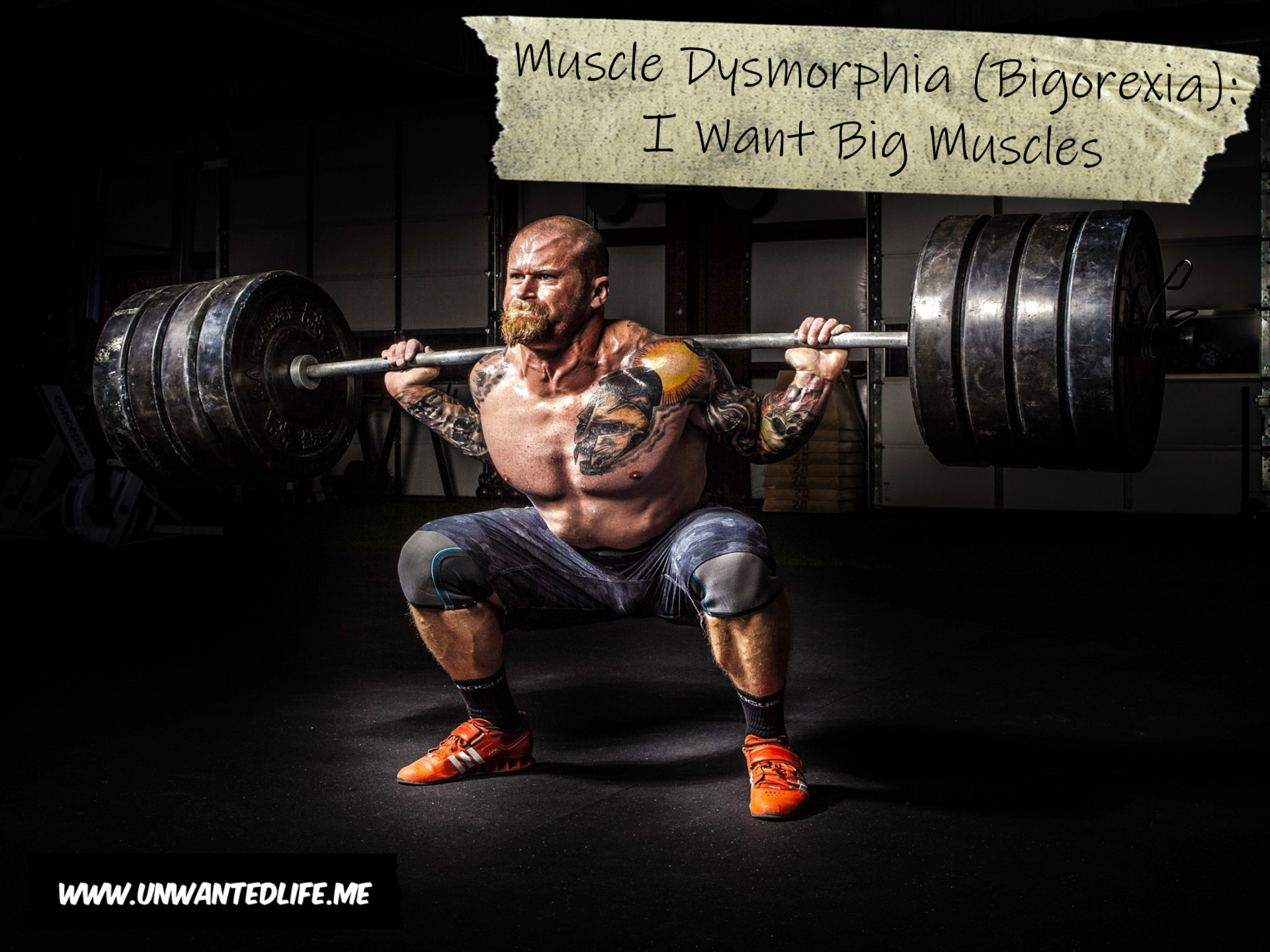I first became aware of muscle dysmorphia after watching a programme by the BBC. Although I had mentioned this condition before in a previous article, I hadn’t really written about the condition in any great detail itself. Thus, I thought I’d correct that oversight. Plus, after writing about Beat’s eating disorder webchat and orthorexia, I felt I should follow on from that and write about muscle dysmorphia, as it plays a role in my body dysmorphic disorder (BDD).
Is Muscle Dysmorphia An Eating Disorder?
This is a good question, a question where Mosley (2009) makes their case for muscle dysmorphic disorder to be considered an eating disorder. They argued that people with this disorder have the same specific maladaptive patterns of behaviour for exercise and restricting their food intake as people with eating disorders. Mosley (2009) goes on to argue that the distinct cognitions and lifestyles of muscle dysmorphic bodybuilders to get bigger muscles mimics the phenomenology of someone with an eating disorder in their desire to be thin.
To further make their point, Mosley (2009) draws parallels with anorexia nervosa, saying that if anorexia is about over-evaluating eating, weight, and shape, then a similar over-evaluation occurs in muscle dysmorphia. Accept in muscle dysmorphia, it’s in the other direction. Thus, Mosley (2009) believes that muscle dysmorphia should be considered an eating disorder along with anorexia, bulimia, and eating disorder not otherwise specified (EDNOS) as part of a trans-diagnostic view of eating disorders.
On the other-side of the argument, Pope Jr, Gruber, Choi, Olivardia, and Phillips (1997) make a case for muscle dysmorphia not being an eating disorder. Therefore, making it a BDD. Pope Jr, Gruber, Choi, Olivardia, and Phillips (1997) agree that muscle dysmorphia resembles typical eating disorders in a lot of ways. They both have an obsession with perceived bodily defects, abnormal eating habits, and other similar characteristics. However, they point out that when it comes to eating disorders like anorexia, people are primarily focused on how fat they are and how to deal with that perception.
Therefore, Pope Jr, Gruber, Choi, Olivardia, and Phillips (1997) claim that anorexic’s and bulimic’s develop pathological issues with eating first, with exercise being secondary, should that develop at all. But with muscle dysmorphia, they argue they develop concerns over achieving greater muscularity, with the primary focus being on exercise, with their secondary focus being on diet, which is to help with the primary goal.
Thus, I think my answer to this is a no. Although Mosley (2009) makes an excellent case for muscle dysmorphic disorder being an eating disorder, but Pope Jr, Gruber, Choi, Olivardia, and Phillips (1997) case is better. The issues with eating for someone with muscle dysmorphia are secondary to wanting to improve musculature. Plus, there’s the binge eating disorder and ARFID which Mosley (2009) seems to have ignored while making their case. What do you think, is muscle dysmorphia an eating disorder or not?
Muscle Dysmorphia And Body Dysmorphic Disorder
Although people with muscle dysmorphia might show other forms of BDD regarding a certain body part (Pope Jr, Gruber, Choi, Olivardia, and Phillips, 1997), the preoccupation with needing to be large and muscular (or lean and muscular) makes it its own distinct BDD subset. Thus, they’re not the same condition and shouldn’t be treated as such. But there’s obviously is a lot of overlap.
Hitzeroth, Wessels, Zungu‐Dirwayi, Oosthuizen, and Stein (2001) showed this when they conducted a structured interview study on 29 amateur competitive body builders from South Africa. The study found that of the 15 participants with muscle dysmorphia, five also suffered from BDD. Meaning 33% of the participants were comorbid with muscle dysmorphia and BDD.
Although this study has a small sample size, it is supported by another study, adding weight to their results. Pope et al. (2005) wanted to explore if muscle dysmorphia was a form of BDD by reviewing the histories of 63 male participants. They compared those with BDD without muscle dysmorphia with those who only had muscle dysmorphia. The results showed that of the 14 men with just muscle dysmorphia; they resembled the other 49 men with BDD. The participants overlapped on BDD severity, demographic features, delusional views of their bodies, and the number of non-muscle-related body parts of concern.
Furthermore, Pope et al. (2005) study found that men with muscle dysmorphia were at greater risk than those with just BDD. The study highlighted that they were more likely to have a poor quality of life, attempt suicide, engage in several compulsive behaviours, and have a prevalence for substance abuse, especially anabolic-androgenic steroid abuse.
Because of those increased risks, in a clinical setting, it would be advisable for anyone doing an assessment of men for a suspected eating disorder or BDD to also inquire about muscle dysmorphia (Pope et al., 2005). To not do so might put clients at risk of harm, simply because they didn’t ask a couple of extra questions during their assessment.
Interestingly, some people with muscle dysmorphia are aware that they are muscular, but for some reason they’re not reassured by this fact (Pope Jr, Gruber, Choi, Olivardia, and Phillips, 1997). That’s likely because, as with BDD, muscle dysmorphia often comes down to low self-esteem. If you would like to learn more about how to improve your self-esteem, then check out my pervious article on the topic by clicking here.
What Is Muscle Dysmorphia (Bigorexia)?
Now that we’ve discussed if muscle dysmorphia is a BDD or an eating disorder, we can now properly define it. Pope Jr, Gruber, Choi, Olivardia, and Phillips (1997) provided a great way to describe muscle dysmorphia, which is as follows.
Typically, people with (BDD) are concerned with a specific aspect of their body, such as their nose, skin, or face. But people with muscle dysmorphia are pathologically obsessed with their body as a whole. Being preoccupied with not being big or muscular enough. This can cause sufferers to be consumed by weightlifting and other related activities, which can cause significant distress when their bodies are seen. This can lead to anabolic steroid abuse and addiction as they seek to bulk up. It should also be noted that sometimes, this disorder can mean muscular and lean, especially for women. Because, although muscle dysmorphia is primarily a male disorder (Mosley, 2009), it can affect women, too.
Or simply put, muscle dysmorphia is a form of BDD with a focus on muscularity (Pope et al., 2005). One key thing to remember is that devotion to a sport or bodybuilding is different to muscle dysmorphia, where this dedication could lead to them turning down other opportunities in much the same way. What makes muscle dysmorphia a disorder is the overwhelming distress and dissatisfaction with their bodies’ musculature.
Signs
According to Fortes, Ferreira, Carvalho, and Miranda (2017), there is an early warning sign for muscle dysmorphia, and that’s body checking. Body checking can appear as comparing your body to another person’s body, checking your muscle size in the mirror, pinching your muscles, and seeking others to confirm the hardness and size of your muscles. If you’ve noticed an increase in this kind of behaviour, then you could be at risk of developing bigorexia.
Some of the other regular signs, according to Pope Jr, Gruber, Choi, Olivardia, and Phillips (1997), are:
- Not allowing your body to be seen in public.
- Wearing baggy clothes.
- Wearing layers of clothes, even in summer and during heat waves.
- Avoiding situations where your bodies would be on show, such as swimming, beaches, and changing rooms (locker rooms).
- Life revolving around working out and fitness.
- Getting anxious, stressed, or distressed if forced to miss working out.
- Obsessively sticking to high-protein and low-fat diets.
- Having a meticulous workout schedule and diet.
- Having to compensate if they’ve felt too agitated because of their body issues, such as doing an extra workout session.
- Being certain you’re much smaller than someone who is actually the same size as you, if you could view it objectively.

For me, I cover all aspects of my body as much as possible. I always wear a long sleeve T-shirt or something long sleeve to hide my arms, not because of the scars, but because I don’t want people to think I have small weak arms. I’m always in baggy clothes, especially baggy jeans, because baggy jeans reduce the chance the wind will blow them against my legs, showing them as being small like they can with trousers. On top of that, I only wear three quarter length jean shorts to hide my legs. No matter the weather, I’ll be dressed like this, and I’ll also be in all black. Which isn’t easy in the summer.
However, although I want to bulk up and have bigger muscles, I lack the drive and the health to make that happen. Hopefully, my impending eating disorders assessment will help distinguish if I have BDD or BDD and muscle dysmorphia, as well as my eating disorder. Do any of these signs ring true for you?
As always, leave your feedback in the comments section below. Also, feel free to share your experiences with bigorexia, wanting bigger muscles, and BDD in the comments section below as well. If you want to stay up-to-date with my blog, then sign up for my newsletter below. Alternatively, get push notifications for new posts by clicking the red bell icon in the bottom left corner.
Lastly, if you’d like to support my blog, then you can make a donation of any size below as well. Until next time, Unwanted Life readers.
References
Fortes, L. D. S., Ferreira, M. E. C., Carvalho, P. H. B. D., & Miranda, R. (2017). Is drive for muscularity related to body checking behaviors in men athletes?. Revista Brasileira de Ciências do Esporte, 39, 141-147. Retrieved from https://www.scielo.br/j/rbce/a/WGb6rnXt7j3yKSwFGk4XZHB/abstract/?lang=en, https://doi.org/10.1016/j.rbce.2016.08.001, and https://www.sciencedirect.com/science/article/pii/S0101328915300573.
Hitzeroth, V., Wessels, C., Zungu‐Dirwayi, N., Oosthuizen, P., & Stein, D. J. (2001). Muscle dysmorphia: a South African sample. Psychiatry and Clinical Neurosciences, 55(5), 521-523. Retrieved from https://pubmed.ncbi.nlm.nih.gov/11555349 and https://onlinelibrary.wiley.com/doi/full/10.1046/j.1440-1819.2001.00899.x.
Mosley, P. E. (2009). Bigorexia: bodybuilding and muscle dysmorphia. European Eating Disorders Review: The Professional Journal of the Eating Disorders Association, 17(3), 191-198. Retrieved from https://www.researchgate.net/profile/Philip-Mosley/publication/23225701_Bigorexia_Bodybuilding_and_Muscle_Dysmorphia/links/59e54d0c0f7e9b0e1aa88cf0/Bigorexia-Bodybuilding-and-Muscle-Dysmorphia.pdf, https://pubmed.ncbi.nlm.nih.gov/18759381, and https://onlinelibrary.wiley.com/doi/10.1002/erv.897.
Pope, C. G., Pope, H. G., Menard, W., Fay, C., Olivardia, R., & Phillips, K. A. (2005). Clinical features of muscle dysmorphia among males with body dysmorphic disorder. Body image, 2(4), 395-400. Retrieved from https://www.ncbi.nlm.nih.gov/pmc/articles/PMC1627897, https://doi.org/10.1016/j.bodyim.2005.09.001, and https://www.sciencedirect.com/science/article/abs/pii/S1740144505000744.
Pope Jr, H. G., Gruber, A. J., Choi, P., Olivardia, R., & Phillips, K. A. (1997). Muscle dysmorphia: An underrecognized form of body dysmorphic disorder. Psychosomatics, 38(6), 548-557. Retrieved from https://www.sciencedirect.com/science/article/pii/S0033318297714002 and https://doi.org/10.1016/S0033-3182(97)71400-2.


This is a very interesting post. I had never heard of this before so this was such an important post for raising awareness- and you’ve done that with me. Thanks for sharing
Hopefully you’ll be the first of many
This is worrying as body obsession is destructive. I am glad you highlighted what to look for. I actually have a weight lifting friend.
Hopefully your friend doesn’t have this issue
I have never heard of this disorder, and I do not think I would classify it as an eating disorder as the main concern is bulking up. I do find it interesting, though, that people who suffer from muscle dysmorphia cover up their bodies instead of being proud of the muscle and strength they have achieved. Low self-esteem also plays a part here, based off that information.
Thanks for sharing yet another educational and interesting article!
It does seem counter intuitive, but it’s the same for people who cover up for thinking they’re not skinny even though they are
Really interesting and well reached post. I’m aware of bigorexia particularly because of Rich Piana whose obsession with his look took him in the end (RIP).
With going to the gym you can find it addictive, and when my goals were based more around achieving a look I was more particular with my diet and do things like pinching my skin.
I found switching to goals based around performance (speed, endurance and strength) useful for me to not over obsess about my look.
That’s great that you found a way to still enjoy the gym just be changing the types of goals you set yourself
This is such a interesting and insightful post. I’d never heard of this before and I appreciate you bringing it to my attention. Thank you so much for sharing Xo
Elle – ellegracedeveson.com
I’m glad I was about to bring this to your attention
This is not something I have had heard of before but it makes sense – we are being bombarded with so much information via social media that it is inevitable that it will feed the personality of those people who are looking for something to attach to. For some it will be excessive cleaning, for others it could be muscle dysmorphia and that then can be a dangerous road to travel down.
Thank you for sharing your thoughts
Really insightful post. I didn’t know this was a thing, glad to know about it now.
Thank you
I have heard of Body Dysmorphia but wasn’t familiar with muscle dysmorphia until i read your very detailed blog.
I agree that body dysmorphia can be classified as a mental health condition and may stem from low self esteem. However there is thin line between body dysmorphia and not being satisfied with a body part or insecurity. As always, very detailed blog.
Love the research and article links throughout your post.
Thank you for sharing your thoughts
Wow, this is some pretty insightful information. Thanks for sharing this!
Thank you
This is a really interesting breakdown. I have never looked that deep into muscle dysmorphia, but I without a doubt have friends that are dealing with it. Comparing it to an eating disorder makes sense, even if there are complex differences between them.
I hope your friends come to realise their issues and they get the appropriate help for it
Though I have no qualifications to back it up, I did had two people in my life who are quite exercice obsessed- both having been overweight in the past, so they want to be the absolute opposite now.
Reading your post, I see my ex in this the most. Though he was quite buffed and lost alot of pounds; it still wasn’t enough for him. Always doing dieting or fasting, and religiously training. Upon breaking up, he also reproached me of having been in the way of his training, aswell as dieting, just because we’d go eat to restaurants and I’d been wanting to have time with him (he was going to college + working, aswell as training.. so he had to move something so we could see eachother- among our schedule being the opposite). NOTHING that I had forced him to do either, I never forced him to eat anything.. he choosed to.
He barely allowed me to bring him to a water park once too- being ashamed or never being « buffed » enough to be shirtless. Also HATED taking pictures. Having this disorder confirmed while reading this is soothing in a way.. however unable that I was to help him, or even now. This has a name.
Your ex could really do with talking to someone before his issues destroy his life. Thanks for sharing
Yup it’s all about our plans and struggle! Such an informative stuff keep going on, thanks for sharing with us.
This is interesting, I’ve never heard of this before. I’m going to keep this information in mind just in case. Thank you for sharing!
Thanks for commenting
This is really interesting. I was not familiar with it, even though I know men who work out a lot. We tend to think it’s only women who struggle with body image issues. Thanks for sharing!
Unfortunately, body image and eating disorders are often still seen that way, even by health professionals
I had heard of body dysmorphia from previous posts but never of muscle dysmorphya, so thank you for sharing such an informative post and raising awareness about it! I think that a lot of disorders overlap in symptoms so we tend to classify them as similar. Thank you for sharing!
Happy to have helped you to learn something new
Great article. I remember learning about this condition in college.
You were taught about muscle dysmorphia in college? What did they teach you about it?
YUP its all about your struggle and hard work, really very informative and helpful post. Keep going on thanks for sharing with us.